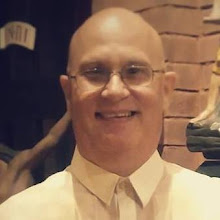Last night's Kansas City Symphony concert was a welcome chance to see in concert one of the rising stars of the conducting world, Giancarlo Guerrero, newly appointed Music Director of the Nashville Symphony. Guerrero was plucked from the Eugene Oregon Symphony to lead this internationally acclaimed orchestra. Born in Nicaragua, Guerrero considers Costa Rica home.
Guerrero is a stocky, compact man yet energetic and personable. He literally bounces off the podium and bounces from section to section while pulling the music from his musicians. Fun to watch for a time, but somewhat distracting at the same time.
The program was an odd one and definitely demanded a shift in mood and listening between the two halves. Opening was the Rossini Overture to the Barber of Seville followed by the somewhat rarely heard Beethoven Symphony # 2. The second half shifted gears to the Gregorian chant inspired Requiem by Maurice Durufle.
The opening overture was a rough and ready affair. Sorry to say the string intonation and tuning were a bit off and the horns were a mess. Every entrance of the horns produced a different sound with the players looking at their instruments as if to say "where did that come from?" The performance was spritely but hardly the polished performance we have heard in the past from the same players.
The Beethoven Second is one of the lesser performed of his Symphonies. The work is far from uninteresting; it is a fascinating glimpse into the transition of the symphony from the world of Haydn and Mozart to the bigger world of Beethoven's own 3rd, 5th and 9th and beyond to Schubert and Brahms. The ensemble came together after a tentative slow introduction, providing a satisfying performance. The Larghetto, looking forward to the great slow movements of the 3rd and 9th, was the highlight with a flowing forward movement and sweet, spot on contributions from the winds. A spirited Allegro Molto finale brought out the rhythmic sparkle from the strings and winds.
Durufle's masterpiece Requiem Op 9 is inspired by the tradition of Gregorian Chant, passed down to him from his teacher Charles Tournemire. The work is often compared to the Faure Requiem as both are not dramatic "end of the world" Requiems but sweet acceptance of death; a promise of paradise and peace.
Guerrero led a finely detailed performance, full of wonderful orchestral and choral color. Notably the work was performed in a version without solos in the "Pie Jesu" and the "Domine Jesu Christe" movement. The orchestra was in much better form for this half, including some much more in-tune and subtle horn work from (I assume, not familiar with the new players yet)the new assistant principal horn.
The Kansas City Symphony Choir produced some gorgeous sound frequently lacking in diction yet always mellow and well balanced. The section in the Offertory "Jesu Domine Christe" with the womens' voices and lower strings came off very effectively. The climactic points were powerful but again a bit muddy in sound from the chorus.
I am much more familiar with performances of this marvelous work using reduced forces having sung it once with choir and organ accompaniment. The Durufle may not be as effective in the concert hall as Verdi's Requiem or that of Faure, but it was great to hear this piece with a full choir and orchestra. And to hear Guerrero at the beginning of his rising career.
Sunday, October 07, 2007
Subscribe to:
Post Comments (Atom)



No comments:
Post a Comment